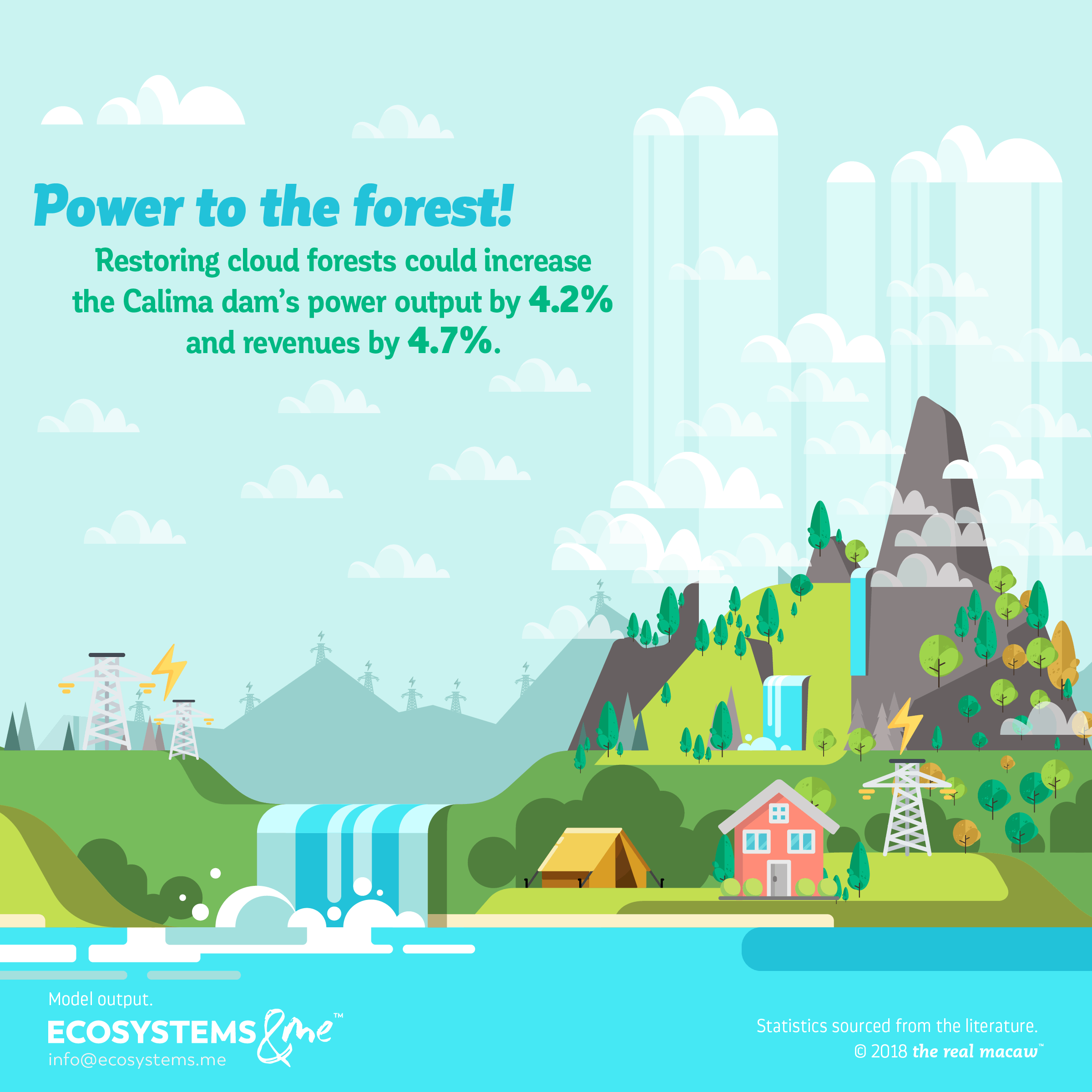
What’s the connection here? To explain that, we have to explain cloud forests.
Cloud forests and water
Cloud forests are a special type of forest. They grow at high altitudes, and they have (surprise, surprise), a lot of cloud cover. Unlike normal clouds which hang in the sky way above treetops, these ones settle at plant level, if not all the way down at ground level. So a persistent, damp fog covers the whole forest – leaves, branches, trees, soils. Water droplets from the fog stick to plants, grow into larger drops, and finally drip (drop?) to the ground. This makes the whole forest very wet.
Cloud forests supply water to a third of the watersheds that feed Colombia’s dams.
But wait, there’s more! Because of the fog, less sunlight reaches the forest, so there’s also less water loss through evaporation and transpiration (from plant leaves). Which makes things even wetter! Especially the soil.
Water and dam supply
Water and electricity is also usually a bad combination, but not for a dam. There are a few things that affect how well they work, but two of the big ones are how much water there is, and how clean it is. With more water, which is more likely to flow faster, the dam can produce more (electrical) power. And with cleaner water, the turbines are less likely to get gummed up by dirt, mud, and other sediments.
Remember how the soils are really wet? Well, that water works its way to the water table, where it eventually supplies rivers – that feed a third of Colombia’s hydro dams. (To be accurate: these rivers are in a third of the dam watersheds.)
Forests mean more and cleaner water for Colombia’s hydro dams, and that means less downtime, more power generation, and more electricity.
A third is already a lot. But because cloud forests are so good at collecting and releasing water, they punch far above their weight when it comes to watersheds. Across the world, they cover only 4.4% of the land area of tropical dam watersheds, but supply almost 50% of their water! So they are extra important.
But wait, there’s more! Forests also clean the water: trees and plants filter pollutants, and their roots anchor soil in place. Less soil gets washed away into nearby rivers… where it makes the water grubby before it flows to the dams. This can cause downtime and a lot of expensive cleanup costs, which are often passed on to consumers.
Just add trees, water, soil, and energy, and blend! ⚡
Cloud forests cover around half the watershed of Colombia’s Calima Dam, which is a key power plant, especially in the dry season. But they used to cover more – almost 90%, in fact. And to know what difference that extra forest could make, both cases (with and without the extra forest) have to be compared. But that’s a little difficult, because it can’t be in two states at once. Luckily, models can link forests to hydrology, then to dam output, and then to energy prices and costs. That just needs a few bits of data, like water input and output levels, leaf evaporation and collection rates, soil erosion levels, power generation response to water flows and sediment inputs, energy prices, and maybe a few more. Toss them all into the model, hit ‘go’, and out pops the comparison! It’s like a Vitamix.
Restoring the forests in the Calima Dam’s watershed could increase water flow and decrease water sediment (to 1/3 of previous levels!). Over ten years, that means 4.2% more electricity generation, and 4.7% higher net revenues for the dam. How… electrifying!
- Dams
